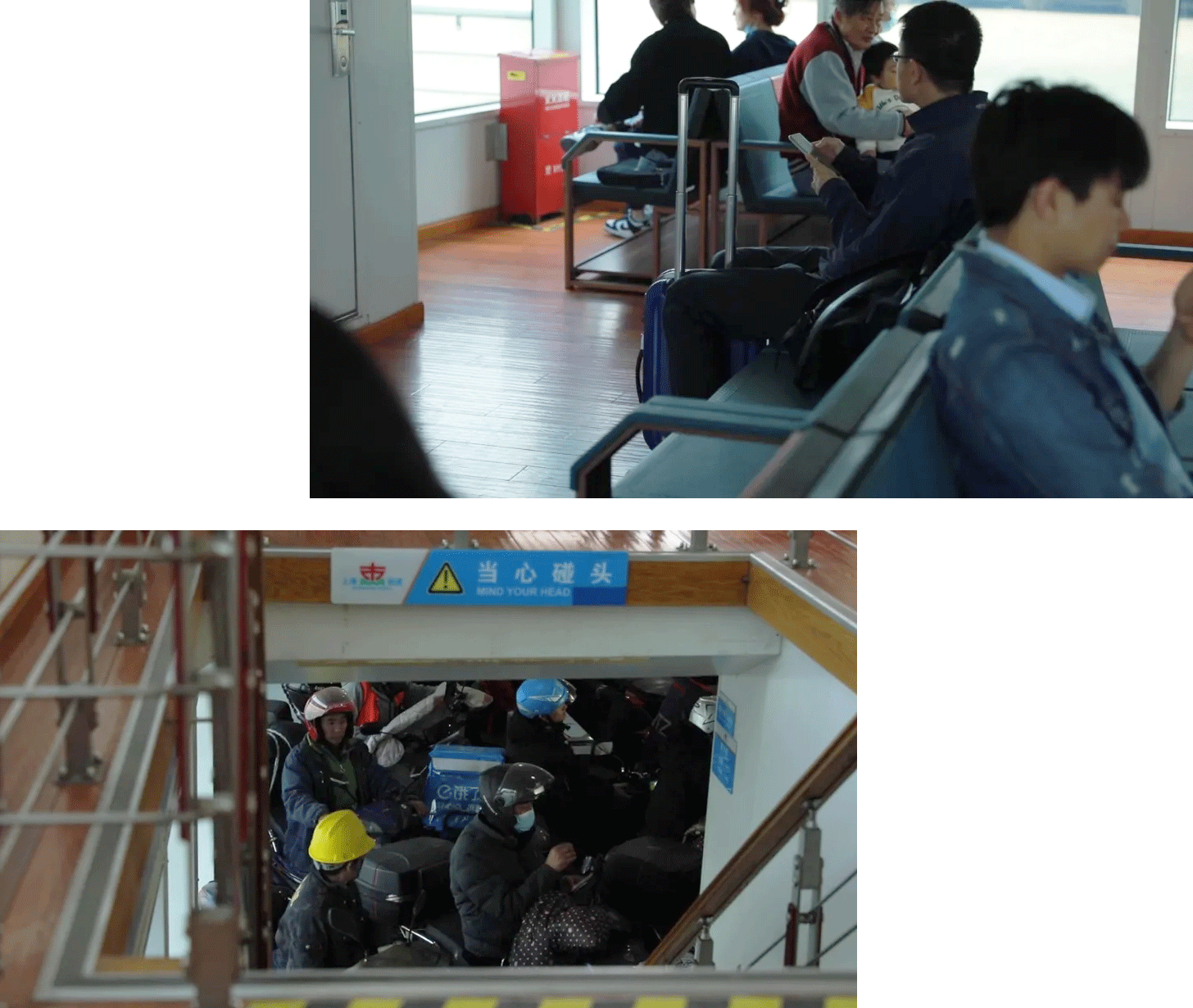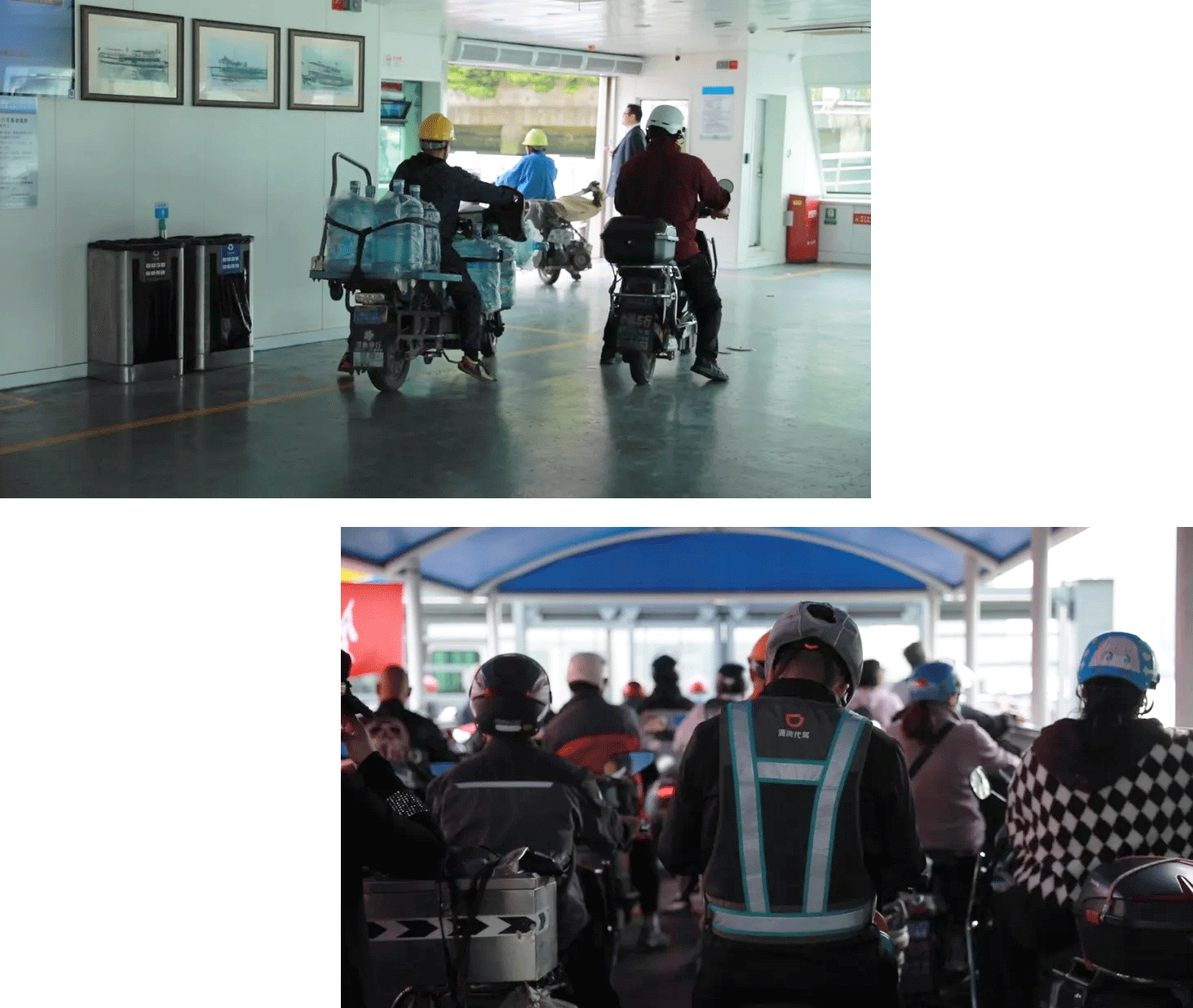
Shanghai’s Forgotten Ferries: A Commuter’s Tale
After 30 years, Shanghai’s ferry ridership had dropped to only a 10th of its 1980s peak. But apart from those taking the ferry to sightsee, who else still relies on these river crossings?
In the 1980s, the Huangpu River Ferry transported more than 1 million people daily between the city’s Puxi and Pudong districts, sitting to the west and east of the Huangpu River, respectively. It was the golden age of the Shanghai ferry as well as its busiest: At the time, there were in total 22 ferry routes along the river, with stops every 1.4 kilometers on average. The annual passenger record reached an astounding 370 million.
The ferry was once the preferred commute for many of the city’s dwellers. With 1 million residents making the trip each day, the Huangpu River was once a magnificent scene.
In 1985, Xinmin Evening News captured a typical morning at Tangqiao Ferry Port in Pudong: At 7 a.m., about 10,000 people queued in a 20-meter-long line. Most would not get to board the first ferry, instead waiting for the second or even the third — a picture reminiscent of today’s crowded subway commutes.
With the expansion of Shanghai’s subway, bridges, and tunnels, daily ferry ridership had shrunk to about 100,000 by 2021. Today, there are still 17 ferry routes on the Huangpu River. While some residents still commute by ferry, the memory of those crowded crossings is relegated to history.
Recently, Shanghai-based social media account SHer Life spoke with passengers on the Taigong, Dongfu, Yangfu, and Sangang lines.


The Taigong Line (Taitong Zhan to Gongping Road) connects the North Bund in Hongkou District to Pudong’s Binjiang Road.
Here on business, Mr. Zhou sits on the ferry’s upper deck, suitcase in hand. His office at Raffles City on the North Bund and his Mandarin Oriental hotel in Pudong both overlook the Huangpu River, making the 20-minute ferry ride his most convenient choice. But when Zhou was booking his hotel, he certainly didn’t know he would be taking the ferry.
“We chose our hotel based on distance, so I didn’t know that there was a river in between — it looked very close,” he said. “When I first took the ferry two years ago, I was pretty surprised. Baidu Maps suggested the route and mentioned crossing the river. I thought there would be a bridge, but when I went along the route, I realized it was a ferry.”
Zhou, from the northern city of Tianjin, has traveled to Shanghai on business three or four times in the past two years. He says he has never taken the ferry in his home city: “The Haihe River in Tianjin isn’t that wide, and there are a lot of bridges, so ferries aren’t necessary for such a narrow river.”

Pushing their grandson in a stroller, Mrs. Cheng and her husband have just taken a round trip from the port at Gongping Road in Hongkou District. The couple had taken their grandson out to play on the North Bund, but when they saw the ferry port, they spontaneously decided to take it to neighboring Pudong. Taking the ferry, to them, is a unique experience. Although their grandson is still young, Cheng believes he is already forming memories. “He was really excited today. To him, the ferry is something new.”
On the same ferry, the upper deck attracts more sightseers, while the lower deck is dominated by electric bikes and their riders. The different paraphernalia packed on their vehicles tell stories about their lives. Judging by the 10 jugs of water attached to his bike, it is clear from just one glance that Mr. Ni, from eastern Anhui province, is a water delivery man. Today, he’s transporting water from Puxi to Pudong. At the time of our interview, the river’s water level is low, causing the pier to bob up and down. Ni waits for the other passengers to disembark before carefully maneuvering his loaded bike off the ferry.

Riding from Yangjiadu to Fuxing East Road along the Yangfu Line, the 30-something Mr. Zhao, part of the city’s fleet of app-ordered designated drivers, is only taking the ferry for the second time.
The first time, he was curious about the experience and parked his electric bike on the lower deck to explore the upper level. Now, less intrigued, he stays put. We wonder: During the day, are there already people looking for designated drivers?
“Daytime work mainly involves helping 4S car service shops with maintenance and moving cars,” Zhao explains.
Around 4 p.m., after finishing the day’s tasks, Zhao gets ready to head back to Puxi for a break before his night shift begins.
“I usually go back to sleep for a while, then head out at around 8 p.m. Most of the time I return around 2:30 a.m.,” he says, “We make most of our money at night; that’s when more people call us.”

On the same line, 46-year-old Mr. Jing is returning to Pudong from Puxi. He’s been on many of the Shanghai ferry routes — not for work, but as a pastime. “Sometimes I just come out to wander around,” he says. Jing works in real estate management, alternating two days of work with two days off. It’s his day off, and he treats riding the ferry like a water-bound city walk. Today, he arrived in Puxi, parked his bike, and then strolled around East Nanjing Road and the Bund. “It’s really boring at home. Typically, I listen to music, watch TV or videos, but none of that compares to going out and being active.”
But 19-year-old Zhou is different. He and his fellow workers board the ferry and find a corner to squat and immerse themselves in their phones. “I’m tired. I just got off work,” Zhou explains. He works and lives in Pudong, but he’s taking the ferry to Puxi to get a bite to eat. “When I take the ferry, I don’t look at the scenery. I’ve already seen enough of the Huangpu River while working.”
Zhou works as a chef in a hotel in Lujiazui, home to Shanghai’s famous skyline. Based on his description, we make an educated guess that he works at the Ritz Carlton, which is 886 meters from the Dongchang Road port, making the ferry a convenient choice for him.

The Sangang Line (Sanlin to Xuhui Port) seems to span different eras. The dock at the Sanlin side retains an ’80s aesthetic, while the architecture of the Xuhui dock looks futuristic, earning it the nickname “Spaceship Pier.” Passengers on this route include pedestrians and cyclists, but the vast majority are workers rushing about on motorized bikes.
Mr. Yu, 68, who drives a three-wheeled bike, takes the Sangang Line four times a day.
“I take two round trips every day because my wife works in Qiantan in Pudong, and I live in Dong’an New Village in Puxi.” He’s been meeting his wife and dropping her off from their home in Puxi to her work in Pudong every day for the past four years. Including ferry time, which is 40 minutes one-way, he spends around three hours on these daily round trips.
It’s around noon, and Yu is returning home after dropping off his wife at work. “Why do I choose the ferry? Because I drive a special disability vehicle. They are not allowed on large bridges or through tunnels, so the only way across the river is to take the ferry.” While it’s free for Yu to take the ferry using his disabled person’s permit, he spends about 350-400 yuan ($48-55) monthly on gas for these round trips. His wife works at a supermarket, spending most of her time standing, so Yu tries to ease her burden by ferrying her back and forth.
Yu describes how the Sangang Line is exceptionally busy during rush hours. “During peak times, I have to wait in line until the third ferry comes before I can board,” adding he hopes that more ferries can be added to the route to accommodate more passengers and reduce potential safety risks from overcrowding.
Yang also views the Sangang Line as a commuter route. At 3 p.m., he has just arrived in Puxi from Pudong for work at his late-night barbecue restaurant near Wulumuqi Road in Xuhui District. His electric scooter is loaded with supplies for the night’s barbecue. “When I get off work, the ferry is usually running again — around five or six in the morning.”
Among the army of electric scooter riders crossing the river are many delivery workers. Deng, 51, is delivering a bouquet of flowers from Xuhui District to Pudong — a 17-kilometer trip that earns him 35 yuan. “Sometimes we make several ferry trips a day.”
Shi is another frequent ferry user that day. Currently working for the vehicle-hailing platform Huolala, his task is to transport watermelons from Sanlin in Pudong to Puxi — an 18-kilometer, one-hour journey that will earn him 26 yuan.
Working delivery part time, Shi has made numerous ferry trips. The Ximin Line is the southernmost ferry route in Shanghai, and Shi is no stranger to it, helping customers transport goods between the central Minhang District and the southern Fengxian District.
“Sometimes it’s factories that need some parts; sometimes it’s delivering household goods,” Shi explains. Having lived in Shanghai for 20 years, he feels he’s learned a lot and still wants to pursue job prospects in the city. “There are a lot of opportunities in Shanghai. The population is large, the economy is pretty developed, and so because of this, there will be a lot of demand in the service industry.”
Reported by Jiang Tianya.
A version of this article originally appeared in SHerLife. It has been translated and edited for brevity and clarity, and is republished here with permission.
Translator: Marianne Gunnarsson; editors: Xue Ni and Elise Mak.
(Header image: People ride a Huangpu River ferry, May 2024. VCG)










